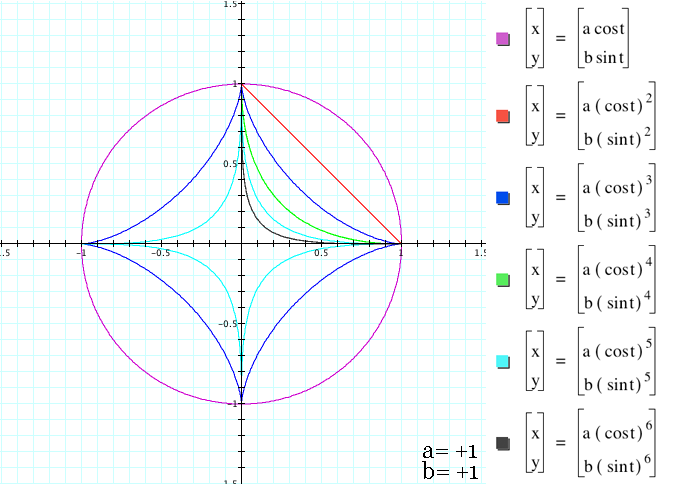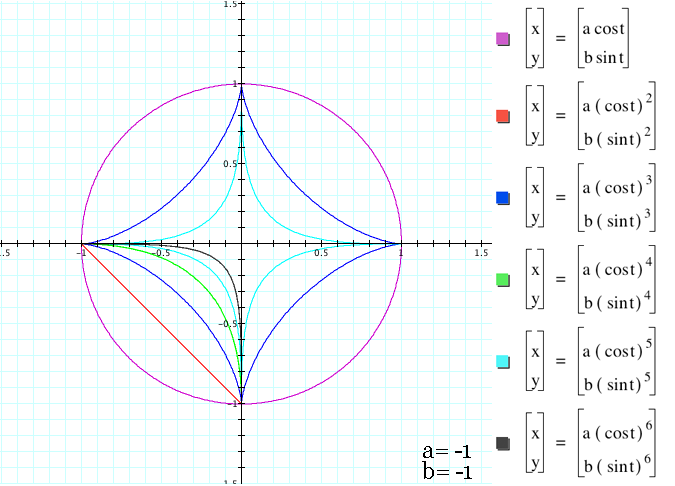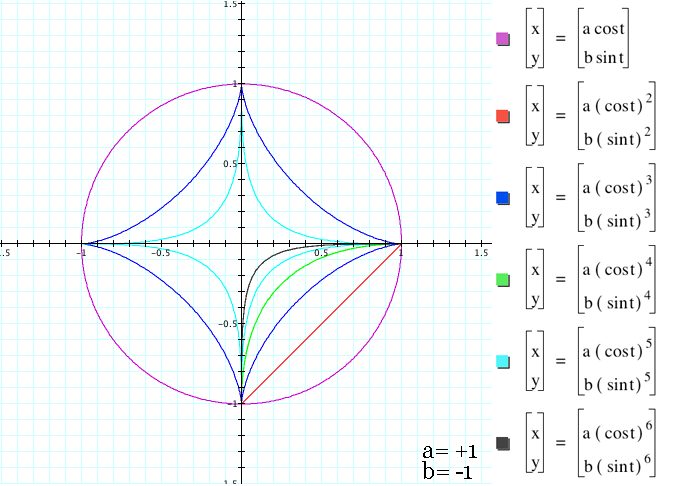

I have chosen to explore what happens to different powers of the parametric equation:
x = a cos(t)
y = b sin(t)
in three different cases:
a = b
a < b
a > b
Beginning with a = b = 1 we have the following graph:

From this graph we can discover several interesting things. We can see that when the exponent is 1, we have a circle. When the exponent is 2, we have a line from (0,1) to (1,0). For exponents greater than 2 we find a curve that approaches y=1 as x approaches 0 and also approaches x=1 as y approaches 0. As the value of the exponent increases, the rate that the curve approces this value increases (it has a greater slope). We can also observe that for all the even powers of the function, the curve is only found in the first equation. To see why this may be, let's change the "direction" of a and b and see how this changes:



We see that as the values change for a and b, the quadrant in which the even functions reside will also change. When a is negative and b is positive, the functions will lie in quadrant II. If both a and b are negative, then the functions reside in quadrant III. Lastly, if a is positive and b is negative then the functions will lie in quadrant IV.
Now let us look at what happens if a and b are not equal in magnitude. We will start by fixing a and varying the value of b. If we change b so that b = 1.5, then we will have the case b > a. Let's have a look:

We can see that by changing b so it is greater than a results in a vertical skewing of our original graph. All of the equations now have graphs that pass through (0,1.5) instead of (0,1). We also notice that just like previously, the even powered functions still only fall into quadrant I if both a and b are positive. A simple exercise by the reader will validate that they will change quadrants based on the signs of a and b similar to what we've witnessed previously.
Lastly, let us set a = 1.25 and b = 1. Let's have a look:

We can see that by changing a so it is greater than b results in a horizontal skewing of our original graph. All of the equations now have graphs that pass through (1.25,0) instead of (1,0). We also notice that just like previously, the even powered functions still only fall into quadrant I if both a and b are positive. A simple exercise by the reader will validate that they will change quadrants based on the signs of a and b similar to what we've witnessed previously.